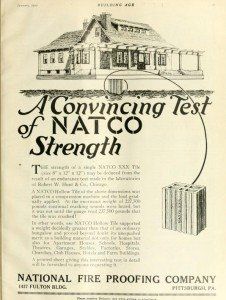Snead and Company: Builder of the MMA Library Wing, 1933
n the early 1930s, the Maria Mitchell Association realized that it needed more room for its Library. The William Mitchell Schoolhouse (the shingled portion of the Library that opened as such in 1920) was overwhelmed with the book collections and the Maria Mitchell Papers, Mitchell Family Papers, and Maria Mitchell’s own books and those of her family. All needed better and more secure space. So, in the midst of the Great Depression, they began the process of planning and fundraising for an addition that would be fireproof and secure. This was no small feat at this time and letters in the MMA Archives discuss that they were knowingly taking on such a project when people were facing economic hardship. They feared they would struggle to raise the funds but knew that this was very much needed for the organization. They also knew it would be of great benefit to islanders and visitors alike. Money came from far and wide, from small amounts to fairly large amounts.
After putting the new Fireproof Wing (Wing) out to bid with many separate bids for the different components, the MMA heard from Snead and Company of New Jersey, a company well-known for the state-of-the-art library stacks and libraries that it created.
The Snead and Company cast iron book stacks were found all over the world and even closer to home at the likes of Harvard and the Washington, DC Public Library. Snead and Co. would go on to “revolutionize and standardize” library book stacks. They would also develop a lighting system and the first compact shelving. Their shelving could be easily modified and they helped to advocate for open stacks beginning in the 1930s. MMA made the decision to use Snead and Company with local contractors working with Snead to complete the project from foundation to dry wells to paint and stucco.
Because of its decision, MMA was the recipient of state-of-the-art library stacks and the new Snead lighting system. Snead oversaw all of the building of the Wing, under the direction of well-respected architect Alfred Shurrocks who lived up the street, was a friend to the MMA, and was married to a Mitchell family descendant! In building the Wing, they utilized the NatCo Double Shell Load Bearing Tile, a wall system of terracotta tiles that is fireproof and exceptionally strong. Just take a look at one of their advertisements that I found.
As MMA works towards the conservation of the exterior of the MMA Library and Wing, funded by the Community Preservation Act, and the re-use of the interior into a lab/classroom and state-of-the-art natural science collections storage, we will be working within the framework of the building, continuing to utilize the Snead stacks for storage. I have already written about the conservation of the roof tiles last fall, so stay tuned for reports on upcoming work which includes the beginning of work on the stucco, steel, and terracotta tiles this spring.
JNLF
Recent Posts





